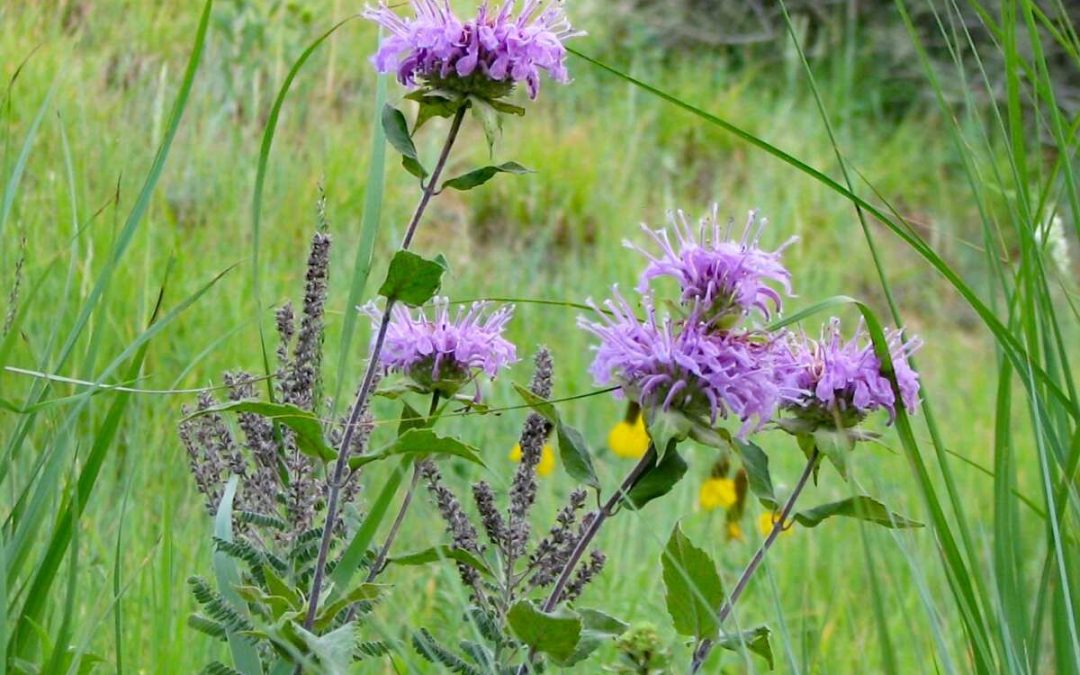Native plants are an important part of the local ecosystem. They’re a great benefit to pollinators and thrive in the conditions you’ll find right in your own backyard and areas like Pikes Peak. If you’re looking for new flora to fill your outdoor space with, there are no better candidates than the ones that call your state home, including these 8 native plants for Colorado Springs.
- 8 Best Native Plants for Your Colorado Springs Yard
- How to Choose Native Plants for Your Colorado Springs Landscape
- FAQ About Native Plants
- Where to Find Native Plants in Colorado Springs
8 Native Plants for Your Colorado Springs Yard
1. Red Twig Dogwood (Cornus sericea)
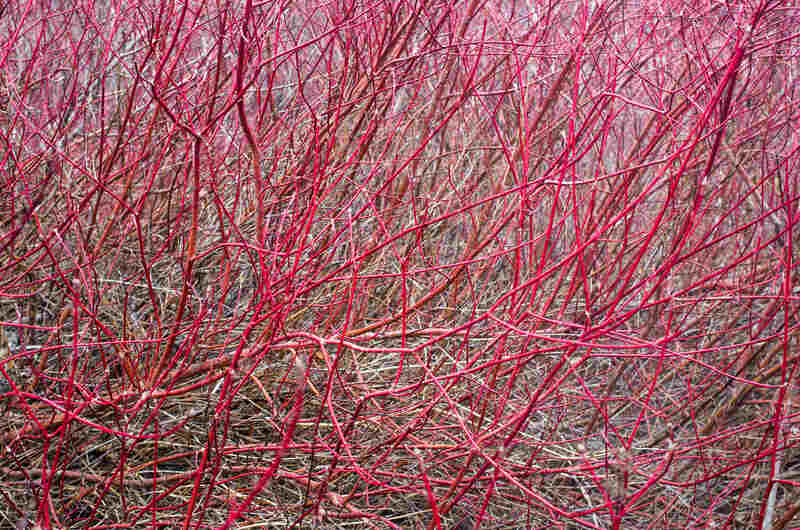
Photo Credit: David Prasad / Flickr / CC BY-SA 2.0
Red twig dogwood is a deciduous flowering shrub native to Colorado. Its name comes from its distinctive red branches. This shrub likes a lot of sun and water, so make sure it gets plenty of light and give it supplemental water if you don’t get a lot of rainfall. It makes a great border plant for either paths or the landscape itself and prefers low elevations.
Plat type: Flowering shrub
USDA Hardiness Zone: 3 to 8
Sun: Full sun to partial shade
Soil: Moist yet well-drained, slightly acidic soil
Duration: Deciduous
Fragrance: Floral
Bloom Time: Late spring to early summer
Water Needs: Moderate to high
Mature Height: 6 to 9 feet
Maintenance Needs: Low
2. Rubber Rabbitbrush (Ericameria nauseosa)
Rubber rabbitbrush is a drought-tolerant deciduous native shrub with tubular yellow flowers that bloom from late summer to autumn and that pollinators love, hummingbirds in particular. Its name comes from the scent its leaves have when crushed, which some have described as rubbery.
If you want to grow rubber rabbitbrush in your Colorado Springs landscape, it makes a great border hedge for your backyard or an ornamental plant by itself. It is mildly toxic, so make sure to keep pets and small children away.
Plant type: Flowering shrub
USDA Hardiness Zone: 4 to 9
Sun: Full sun
Soil: Well-drained clay, sandy, or loam soil
Duration: Deciduous
Fragrance: Described as pineapples by some and rubber by others
Bloom Time: Late summer to autumn
Water Needs: Low
Mature Height: 4 to 7 feet
Potential Hazards: Do not consume. Slightly toxic to livestock.
Maintenance Needs: Low
3. Creeping Mahonia (Mahonia repens)
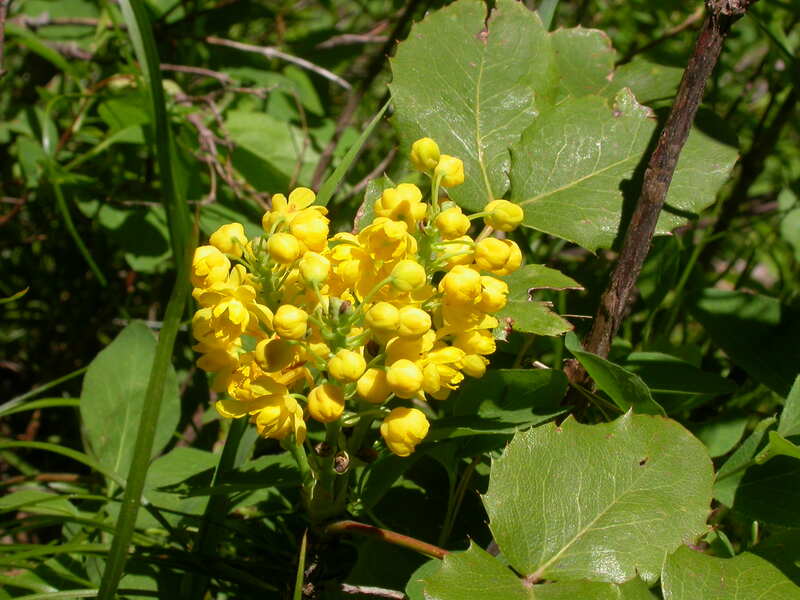
Photo Credit: Matt Lavin / Flickr / CC BY-SA 2.0
Creeping mahonia is a Colorado native evergreen shrub and a great low-maintenance choice for your backyard. Its beautiful yellow flowers bloom in spring and grow edible berries that can be made into a delicious sour jelly. It can tolerate some shade and grows in a variety of soil types and pH balances, making it a good hardy plant that can grow where others can’t.
In the winter, creeping mahonia’s green leaves turn from their usual color to a striking red hue that can vary from mauve to rose. It’s a great ornamental plant for garden beds or containers and can be used as a ground cover.
Plant type: Evergreen shrub
USDA Hardiness Zone: 5 to 8
Sun: Full sun to partial shade
Soil: Prefers a moist yet well-drained chalk, loam, or sandy soil with an acidic or neutral pH balance
Duration: Evergreen
Fragrance: Sweet
Bloom Time: Late spring to summer
Water Needs: Moderate
Mature Height: 1 to 2 feet
Maintenance Needs: Low
4. Eastern Prickly Pear Cactus (Opuntia humifusa)
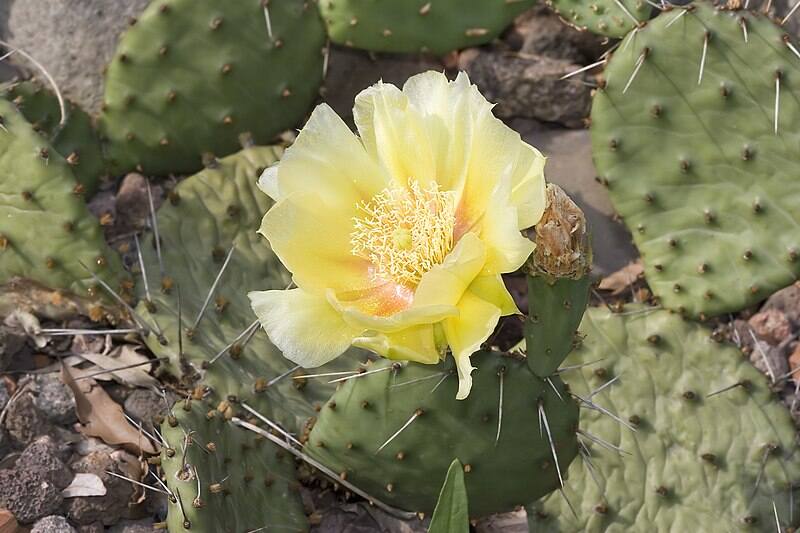
Photo Credit: Olaf Leillinger / Wikimedia Commons / CC BY-SA 2.5
If you don’t mind a few sharp needles, the prickly pear cactus is a great addition to a Colorado Springs landscape. Like most cacti, it loves the sun and doesn’t need a lot of water. The flowers it grows in the summer are beautiful and attract many pollinators, bees in particular.
Prickly pear makes a great ornamental plant, either in a bed or individually. As cacti, they’re wonderful for xeriscaping, but can still fit right in no matter what kind of landscape you have. Just make sure not to walk barefoot around them.
Plant type: Cactus
USDA Hardiness Zone: 4 to 9
Sun: Full sun
Soil: Well-drained loam or sandy soil
Duration: Perennial
Fragrance: Sweet
Bloom Time: Late spring to summer
Water Needs: Low
Mature Height: 0.5 to 1 feet
Potential Hazards: The plant’s spines can cause irritation, pain, or infection if they splinter and lodge in the skin.
Maintenance Needs: Low
5. Black-Eyed Susan (Rudbeckia hirta)
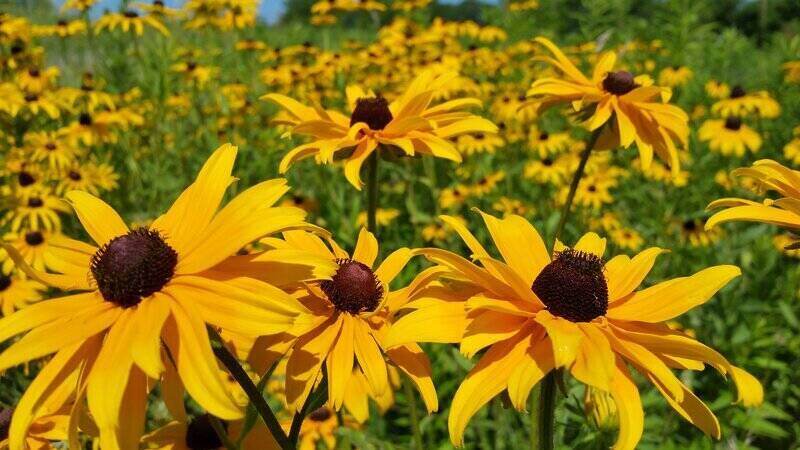
Photo Credit: Pixabay
Black-eyed Susan is one of the most common wildflowers in the United States. It has moderate water needs but won’t need too much extra once it’s established, and it does best in an area with full sunlight. It grows well in acidic soil and can tolerate many soil types, making it a hardy, low-maintenance plant that’s good for areas of your landscape that can’t support other blooms.
If you grow black-eyed Susan, keep in mind that it can spread, so you’ll need to take precautions to keep it away from your other plants. Planting them in a container will keep them isolated. If you plant them in a bed, separating clumps every few years should keep them from encroaching on other flowers. You can also deadhead them to keep them from reseeding.
Plant type: Flower
USDA Hardiness Zone: 3 to 9, though this can vary by species
Sun: Full Sun
Soil: Prefers a moist yet well-drained clay, sandy, or loam soil with an acidic pH balance
Duration: Biennial/short-lived perennial
Fragrance: Sweet
Bloom Time: Summer to August
Water Needs: Moderate
Mature Height: 1 to 3 feet
Maintenance Needs: Low
6. Colorado Blue Columbine (Aquilegia coerulea)
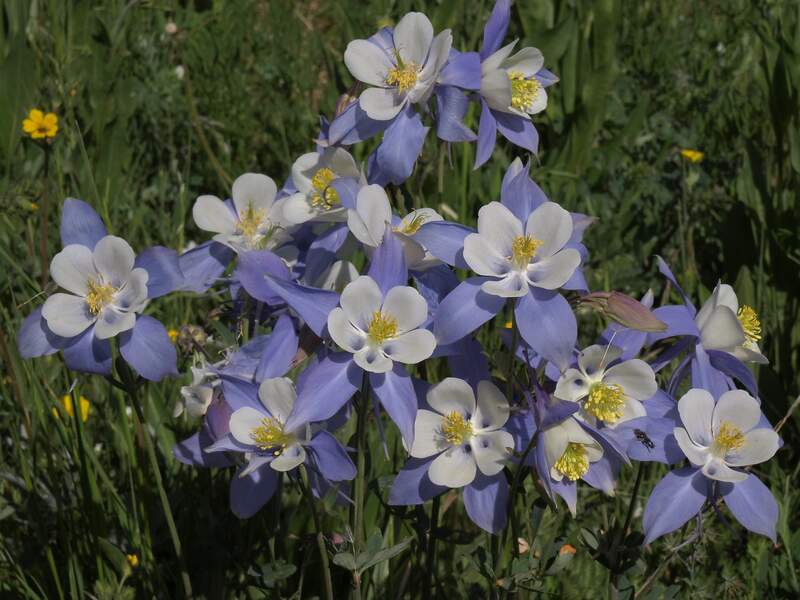
Photo Credit: Jim Morefield / Flickr / CC BY-SA 2.0
If you’re looking for native plants for a Colorado Springs landscape, there’s no better candidate than Colorado’s state flower. Colorado blue columbine, also known as the Rocky Mountain Columbine, is a perennial wildflower with star-shaped purple and white flowers that appear in late spring and early summer. It can tolerate some shade and has moderate water needs.
Blue columbine prefers a well-drained soil that still has some moisture. It’s a great ornamental plant for a container, a flower bed, or bordering a path. This plant is poisonous, but not dangerously so, and is ignored by common garden pests such as rabbits and deer.
Plant type: Flower
USDA Hardiness Zone: 3 to 9
Sun: Full sun to partial shade
Soil: Moist yet well-drained
Duration: Perennial
Fragrance: Sweet
Bloom Time: Late spring to early summer
Water Needs: Moderate
Mature Height: 1 to 2 feet
Potential Hazards: Slightly poisonous. Do not consume.
Maintenance Needs: Low
7. Colorado Blue Spruce (Picea pungens)
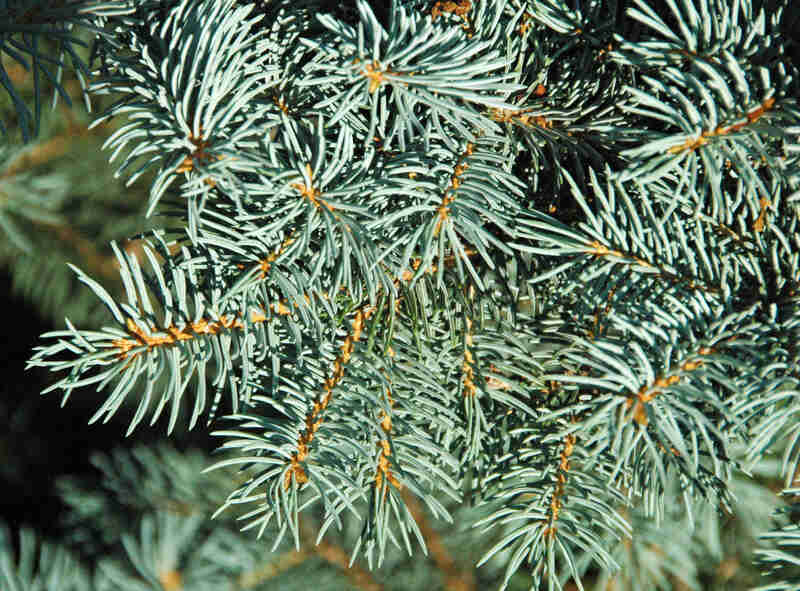
Photo Credit: James St. John / Flickr / CC BY 2.0
The blue spruce is Colorado’s state tree, making it the perfect choice for a tree for your landscape. It’s an evergreen that prefers full sun, requires a moderate amount of water, and likes a well-drained soil. Its season of interest ranges from late summer to early fall.
Blue spruce is best used as a centerpiece for your landscaping. At 30 to 60 feet fully grown, it tends to dominate the space, so an open area is best whether you put it in your front or back yard. If you need to prune it, do so carefully to avoid harmful stress on the tree.
Plant type: Tree
USDA Hardiness Zone: 2 to 8
Sun: Full sun
Soil: Moist yet well-drained clay, loam, or sandy soil with an acidic or neutral pH balance
Duration: Evergreen
Fragrance: Pine
Season of Interest: Late summer to early fall
Water Needs: Moderate
Mature Height: 30 to 60 feet
Potential Hazards: Pollen can set off allergies
Maintenance Needs: Low
8. Ponderosa Pine (Pinus ponderosa)
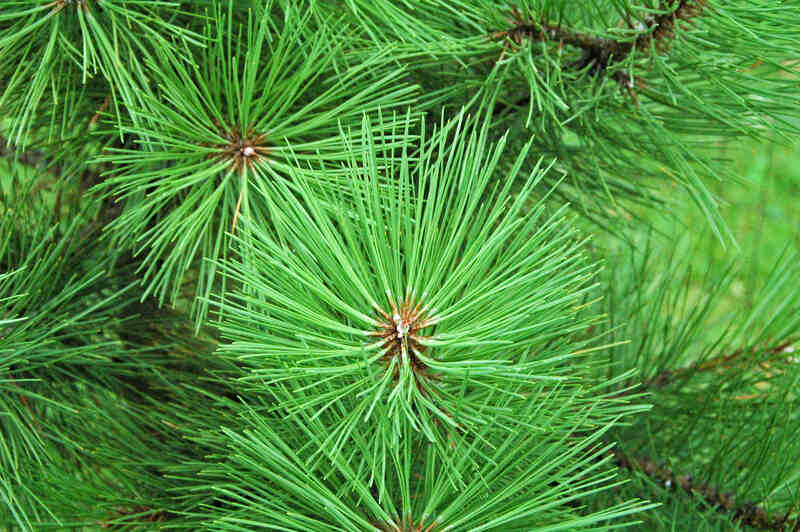
Photo Credit: James St. John / Flickr / CC BY 2.0
Ponderosa pine is another Colorado native tree, one that can live for hundreds of years. It’s an evergreen that stays lush and beautiful year-round, and grows even bigger than a blue spruce. Ponderosa pine prefers full sun and has moderate water needs, but it is still a low-maintenance tree that can make a great addition to a Colorado garden.
Plant type: Tree
USDA Hardiness Zone: 3 to 7
Sun: Full Sun
Soil: Well-drained soil
Duration: Evergreen
Fragrance: Pine
Season of Interest: Year-round
Water Needs: Moderate
Mature Height: 60 to 100 feet
Potential Hazards: Pine nuts and pollen can set off allergies
Maintenance Needs: Low
How to Choose Native Plants for Your Colorado Springs Landscape
Although native plants will thrive in their local habitat, they still have their individual preferred growing conditions. Before planting anything, make sure you understand your outdoor space’s soil, sun, and precipitation so that you can pick the plants that will do the best in it.
Colorado Springs lies in USDA hardiness zone 5, which means that its lowest temperatures can reach between negative 20 and negative 10 degrees Fahrenheit. Many native plants can tolerate this zone comfortably, but some other native plants may not do as well in these temperatures.
Keep in mind that some plants may also be native to only certain parts of the state, in which case they may have a harder time than you would expect. For example, a flower that’s native to areas like Denver or Aspen may not be native to your Colorado Springs garden.
FAQ About Native Plants
It varies depending on the exact plant, but generally, yes, native plants require much less maintenance than non-native ones since they’re already in their natural habitat.
Unfortunately, yes. Under the right conditions, even a native plant can become invasive and push out the other flora in your garden. The smooth sumac is a good example of this, as even though it’s a Colorado native, it can take over your landscape if you don’t control it properly.
It depends on the plant. Different flowers and trees will have ideal planting seasons. Do some research to find out what time of year is best for planting the native plants you have in mind.
Where to Find Native Plants in Colorado Springs
If you need ideas for native plants to put in your Colorado Springs property, there’s no better place to look than its natural areas. Take a hike through areas like the Garden of the Gods park and make note of good-looking flora that you’d like in your outdoor space.
However, in order to make sure your plants are sourced ethically and so as to not disrupt a sensitive ecosystem, never take them directly from the wild. The Colorado Native Plant Society recommends several retailers you can purchase native plants from.
To give your native plants the admiration they deserve, surround them with a landscape that’s well maintained and in tip-top shape. Hand your yard maintenance chores over to a local lawn care professional who can mow the turfgrass, edge the lawn, and trim the hedges.
Main Image Credit: Monarda menthifolia (horse mint) (Colorado Springs, Colorado, USA) / James St. John / Flickr / CC BY 2.0

